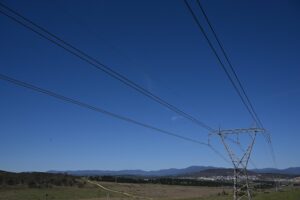A small town in Austria that had no significant industry or trade business is now thriving thanks to local renewable resources.
Güssing (population: 4,000) sits in eastern Austria. In 1988 the region (population: 27,000) was one of the poorest districts in the country. It relied on agriculture, there was no transportation infrastructure, unemployment was high, and 70 percent of those who did have work were commuting to Vienna, 100 miles away. The town, where two-thirds of the working population was out of work and young people were moving away, was referred to as a dying town. Due to a lack of connections to the railway network and to the Austrian Autobahn (freeway) system, energy costs were extremely high. At the time the town of Güssing was said to be hardly able to afford its $8.1 million annual fossil fuel bill.
Several of the town leaders realized that $8 million dollars going to pay for fuel oil (mostly for heating) and other fossil fuels (such as coal for electricity) from outside the region could stay in the local economy if they could produce their own energy. However, they realized if they wanted to be energy self sufficient the first step was reducing energy use. In 1990, the town implemented an energy efficiency program, retrofitting all public buildings with new insulation and replacing all streetlights with energy-efficient bulbs, reducing energy expenditure in buildings in the town center by almost 50 percent.
With greatly improved efficiency, the town then adopted a policy calling for the complete elimination of the use of fossil fuels in all public buildings, in an attempt to keep more money in the local economy.
HEATING WITH LOCAL RESOURCES
 There is not a lot of wind in Güssing, but biomass is abundant—the town is surrounded by 133 hectares (328 acres) of forest. Some local residents, realizing that wood in the forest was decomposing and not being used, started to run a district heating station for six homes. With the success of that project, more small district heating systems were built. The mayor, who was looking for a way to revitalize the town, took notice. In 1996, the heating system was expanded to the whole town and was also generating electricity, all from renewable raw materials gathered from within a five-kilometer radius through sustainable forestry practices.
There is not a lot of wind in Güssing, but biomass is abundant—the town is surrounded by 133 hectares (328 acres) of forest. Some local residents, realizing that wood in the forest was decomposing and not being used, started to run a district heating station for six homes. With the success of that project, more small district heating systems were built. The mayor, who was looking for a way to revitalize the town, took notice. In 1996, the heating system was expanded to the whole town and was also generating electricity, all from renewable raw materials gathered from within a five-kilometer radius through sustainable forestry practices.
Then, in 2001, with the help of the federal government, Güssing installed a biomass gasification plant, that runs off of wood chips from wood thinned from the forest and waste wood from a wooden flooring company. This was the first utility-scale power plant of its kind in the world. The plant uses steam to separate carbon and hydrogen, then recombines the molecules to make a form of natural gas which fuels the city’s power plant. It produces on average 2 megawatts of electricity and 4.5 megawatts of heat, more than enough energy for the town’s needs, while only consuming one-third of the biomass that grows every year. The town also has a plant that converts rapeseed to biodiesel, which is carried by all the fueling stations in the district.
BECOMING A MODEL COMMUNITY
In 2007 the New York Times reported Güssing was the first community in the European Union to cut carbon emissions by more than 90 percent, helping it attract a steady stream of scientists, politicians, and eco-tourists. One year later, Güssing built a research institute focusing on thermal and biological gasification and production of second-generation fuels. That same year a solar manufacturer started producing PV modules in Güssing, producing 850 megawatts of modules a year and employing 140 people. Several other photovoltaic and solar thermal companies have relocated to Güssing, installing new demonstration facilities in the district.
The little town has become a net energy producer—generating more energy from renewables than it uses. Altogether, there are more than 30 power plants using renewable energy technologies within 10 kilometers of the village. Now the goal is to take the lessons from the small town of Güssing and make the entire 27,000-person district an energy-self-sufficient net producer.
Currently around 400 people come to Güssing each week to visit the numerous demonstration plants. Even Austria’s favorite celebrity, former California governor, and renewable energy advocate Arnold Schwarzenegger visited Güssing in 2012. “Güssing has become a green island,” he said when he spokeat the Güssing renewable energy demonstration plant. “You have built your own district heating [system]. You are generating your own electricity. You are operating a biomass power plant, produce synthetic natural gas from wood and develop new fuels at the research lab. I have seen all of this with my own eyes. Everyone should follow your example. The whole world should become Güssing.”
The town now has 60 new companies, 1,500 new jobs, and annual revenues of $17 million due to energy sales, all resulting from the growth of the renewable energy sector. The downtown has been rebuilt and young people picture themselves staying there in the future. And other areas are following Gussing’s lead. More than 15 regions in Austria are now energy independent with regard to electricity, heating, and/or transportation. The town of Güssing has shown that not only is a high-renewables future possible, but also economically advantageous. Schwarzenegger must agree, because when he left he said, “I’ll be back.”
Source: Rocky Mountain Institute. Reproduced with permission








